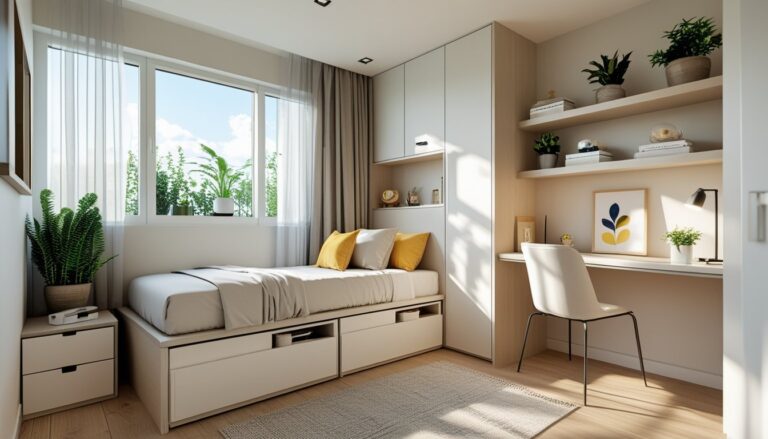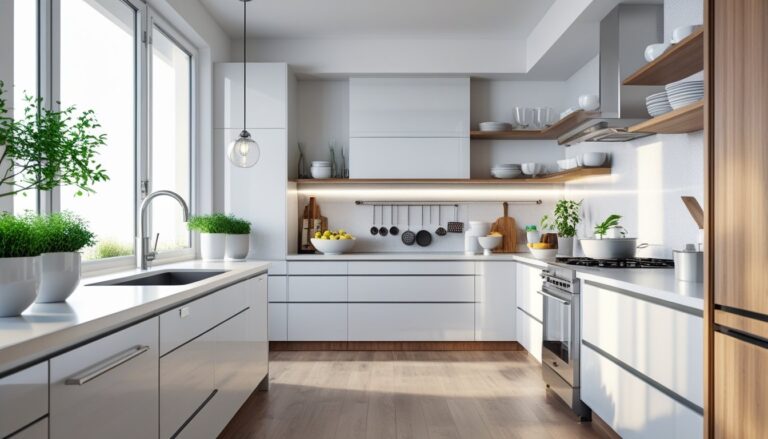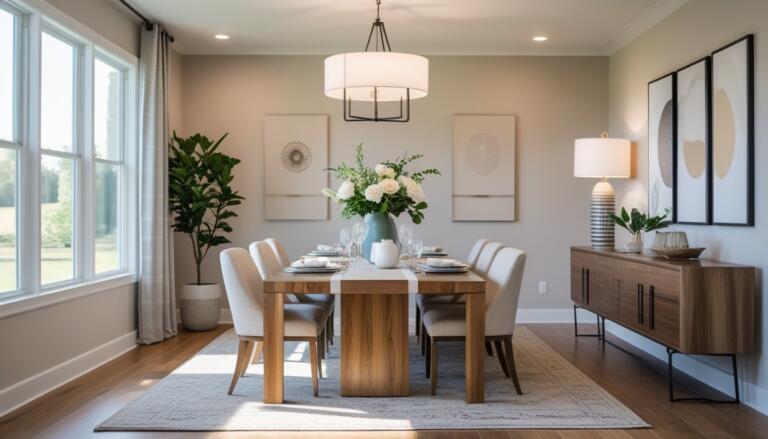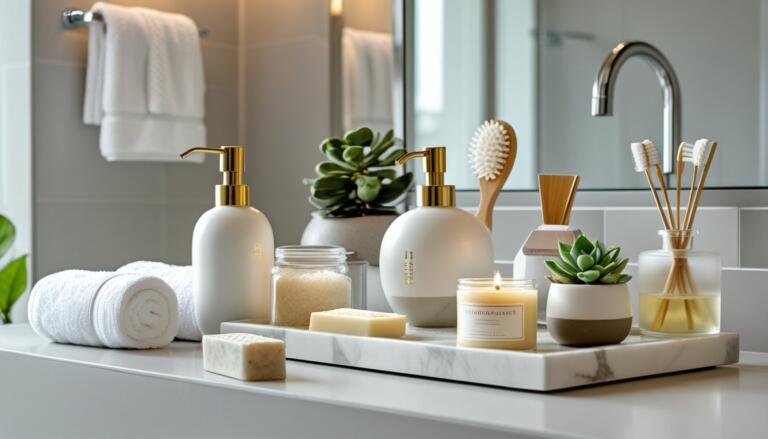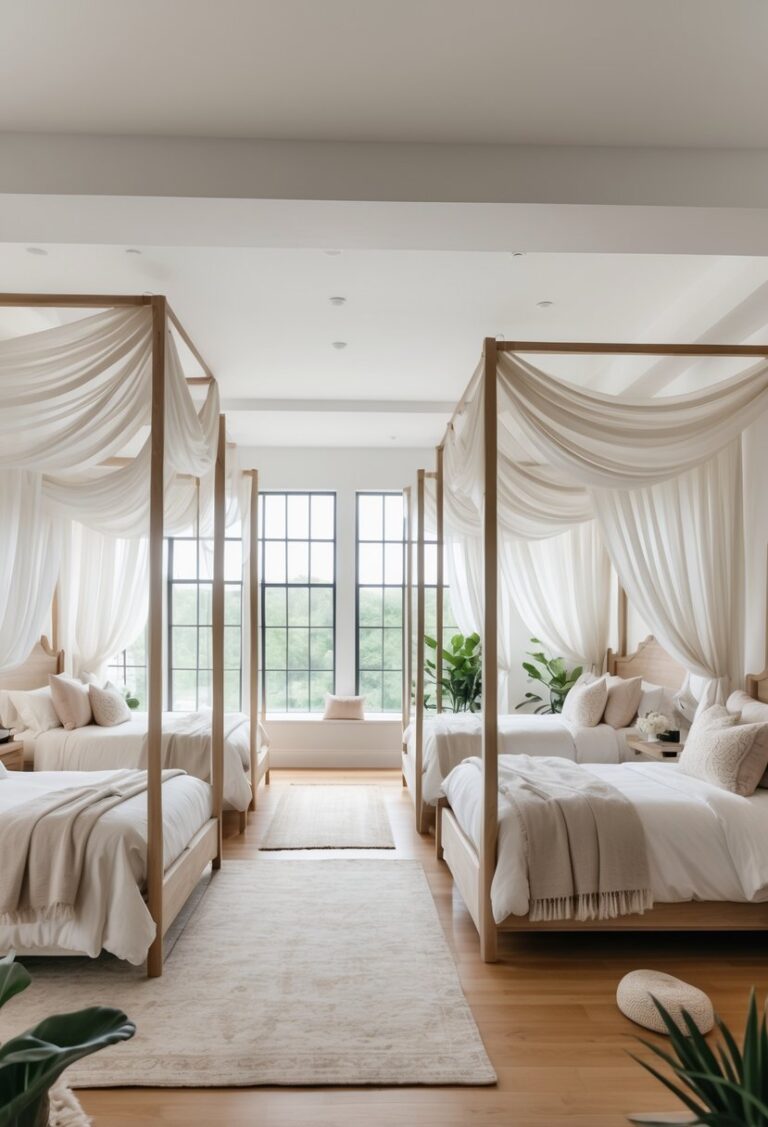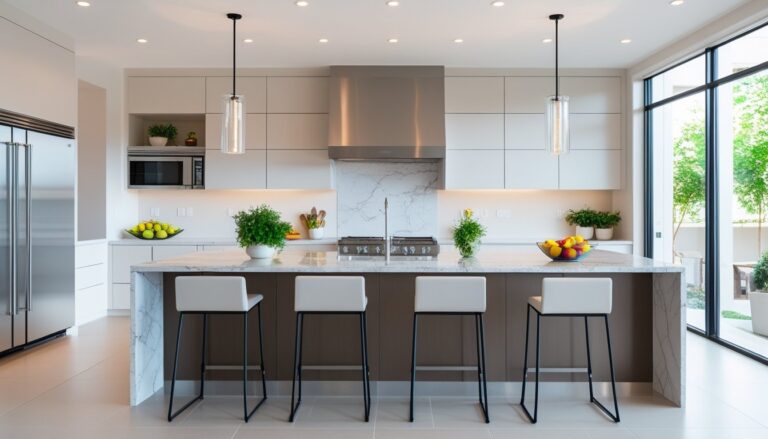6 Living Room Designs with Fireplace for Cozy and Stylish Spaces
A living room with a fireplace can be both a cozy retreat and a stylish focal point in any home. The right design balances comfort, function, and aesthetics to create a space that invites relaxation and warmth throughout the year.

Choosing the right living room design with a fireplace helps maximize both style and comfort while making the fireplace a key feature of the space. This article explores six different ways to arrange and decorate living rooms around a fireplace, offering practical ideas that fit various tastes and room sizes.
1) Brick fireplace with black wood-burning stove

This design features a brick fireplace paired with a black wood-burning stove. The stove adds a practical heat source and gives the space a classic look.
Soft wall colors and wood accents around the fireplace help to create a warm, inviting atmosphere.
A simple mantel or mirror above the fireplace can add a subtle touch of style without overwhelming the room. This setup works well in both modern and traditional living rooms.
2) Modern minimalist fireplace with clean lines
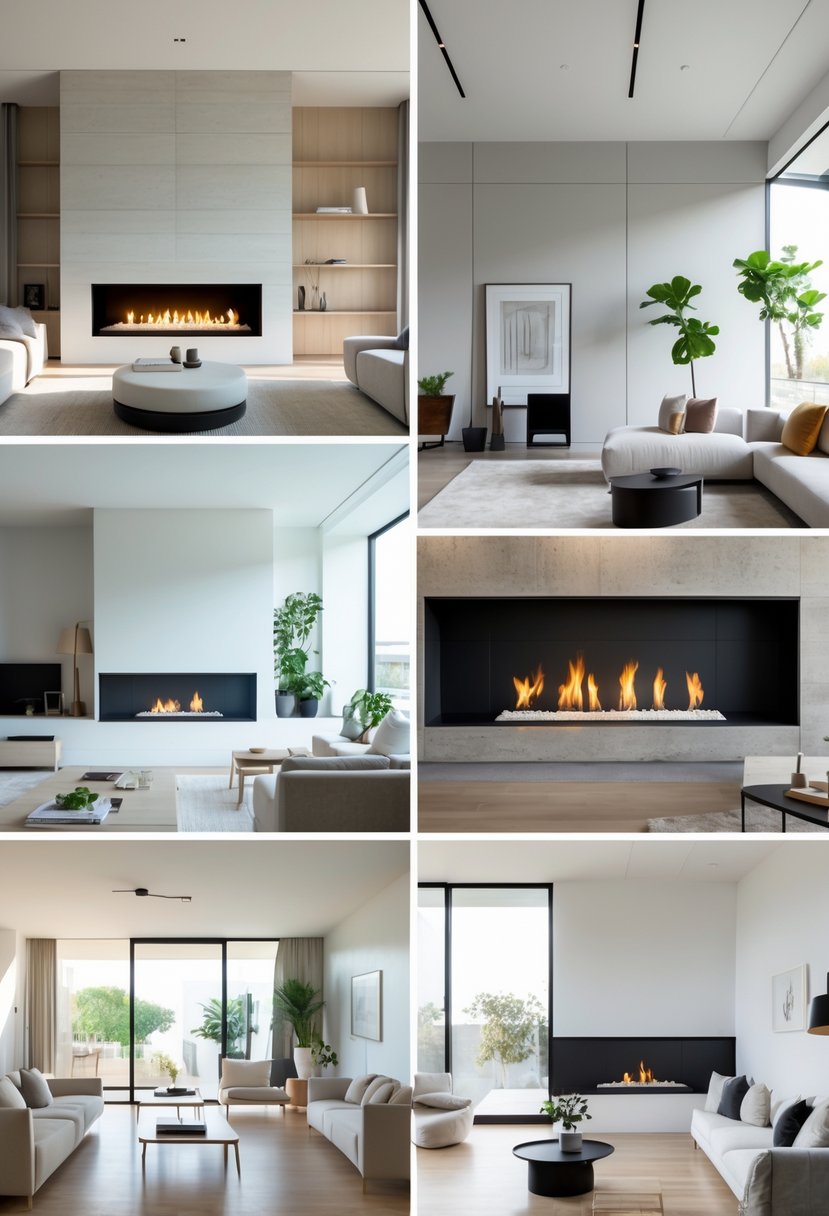
A modern minimalist fireplace focuses on simplicity and function. It often has a long, narrow shape with smooth edges that fit flush against the wall.
The design uses neutral colors and avoids extra decoration. This creates a calm, open feel in the living room.
Its clean lines make the fireplace a subtle but clear focal point. It suits spaces that value order and modern style.
3) Rustic stone fireplace with wooden mantel
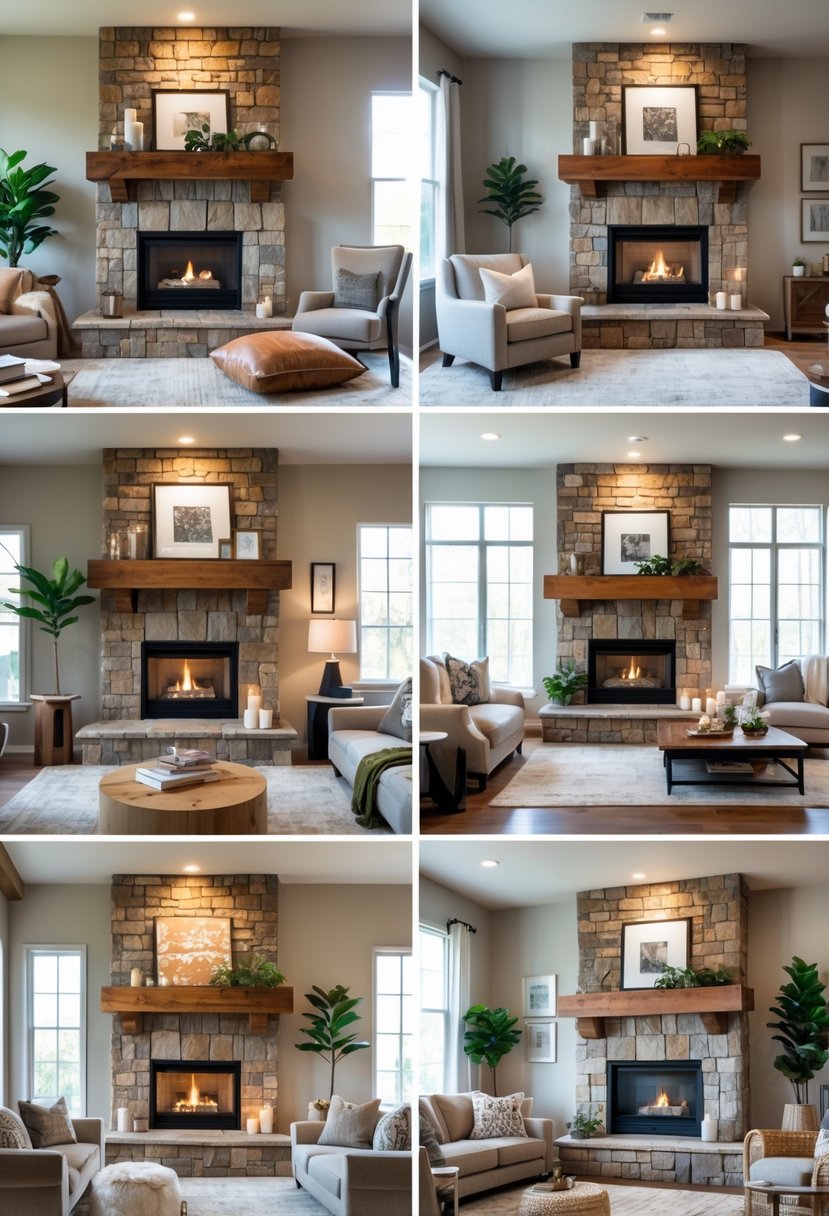
A rustic stone fireplace creates a natural, sturdy focal point in a living room. The rough texture of the stone adds visual interest and a sense of durability.
Pairing the stone with a wooden mantel introduces warmth and contrast. The wood’s natural tones complement the stone and provide space for decor or family photos.
This design works well with wooden beams or built-in shelves for a complete rustic feel. It combines both function and style while keeping the room cozy.
4) Contemporary fireplace with sleek glass surround
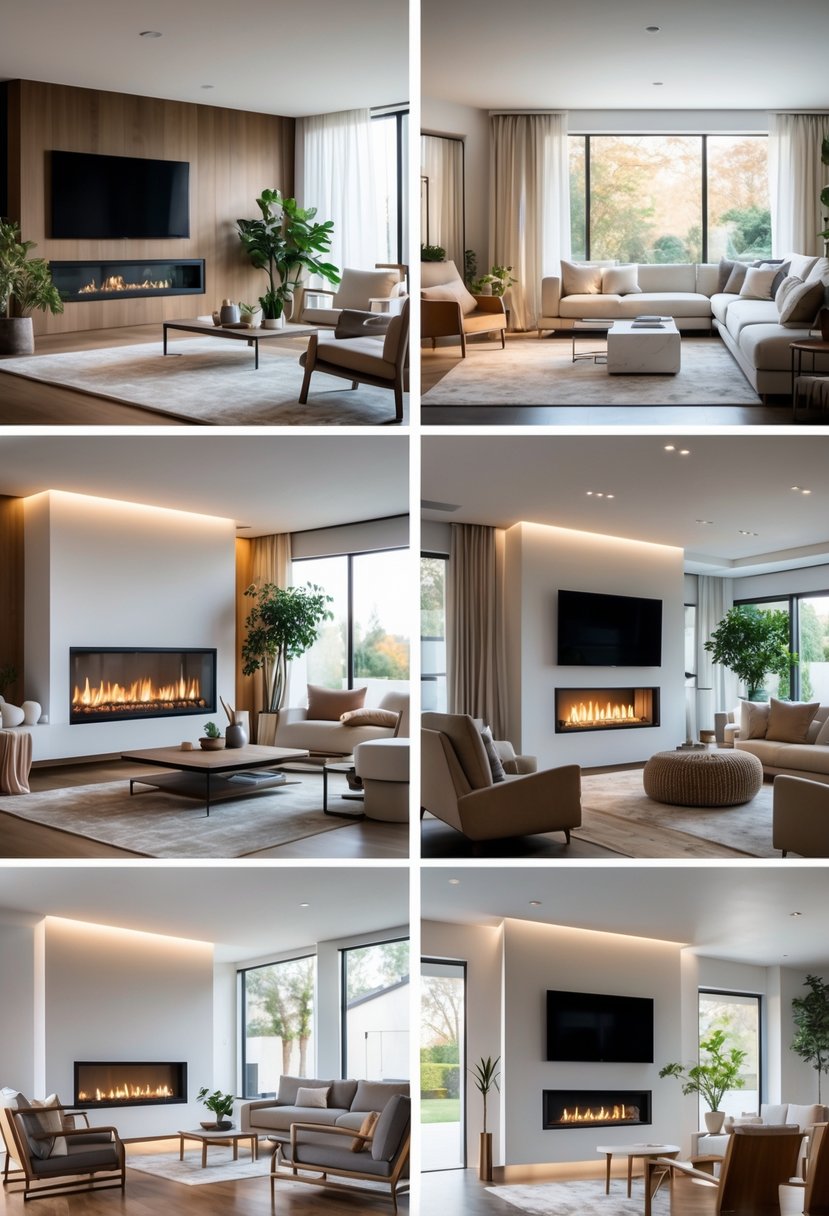
A contemporary fireplace with a sleek glass surround offers a clean and modern look. The glass creates a clear view of the flames, adding brightness and depth to the room.
This design fits well in modern living rooms that favor minimalism and simplicity. It combines style with function, providing warmth while acting as a striking visual element.
The glass surround also helps contain the fire safely and can make the space feel more open. It pairs well with neutral colors and smooth surfaces for a balanced design.
5) Traditional fireplace with ornate mantelpiece
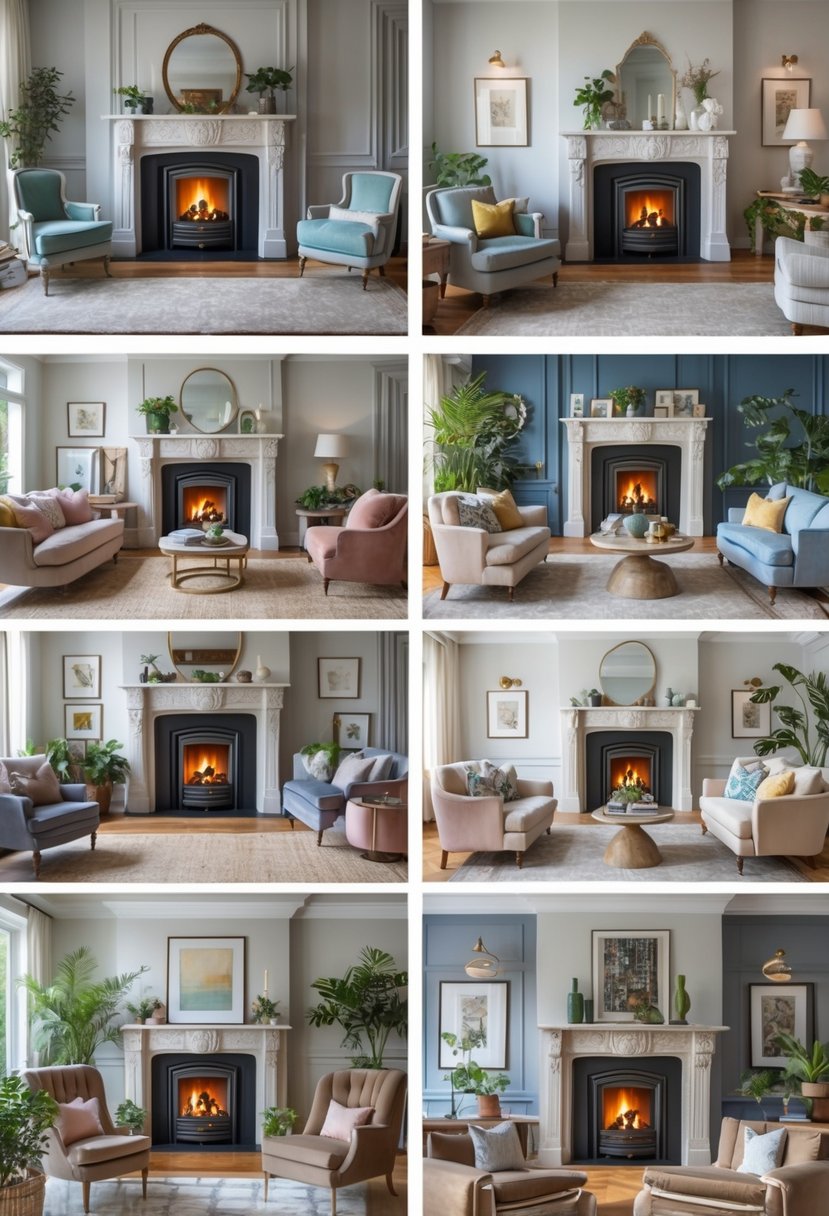
A traditional fireplace with an ornate mantelpiece adds character to a living room. The detail on the mantel draws the eye and creates a strong focal point.
This style often features carved wood or stone, with patterns that reflect historical design. It works well in rooms that balance classic and cozy elements.
Pairing the mantel with simple, rugged furniture helps keep the space warm but not cluttered. This look suits those who value craftsmanship and timeless decor.
6) Double-sided fireplace for open concept living
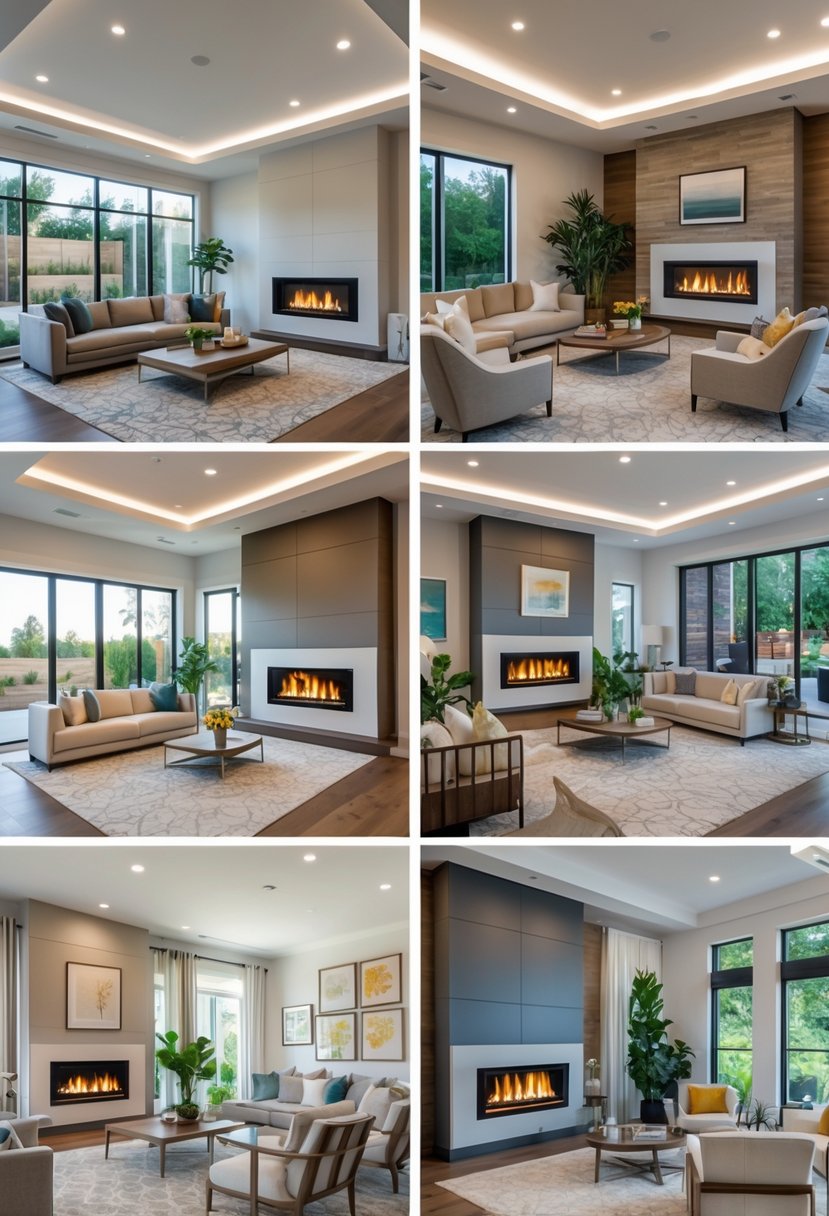
A double-sided fireplace works well in open concept living spaces. It can heat two rooms at once, making it practical and efficient.
This type of fireplace acts as a natural divider without blocking light or sightlines. It also adds a modern and stylish element to the room.
People often choose double-sided fireplaces to connect living rooms with dining areas or indoor-outdoor spaces. This design helps create a smooth flow between different areas.
Key Design Principles for Living Rooms With Fireplaces
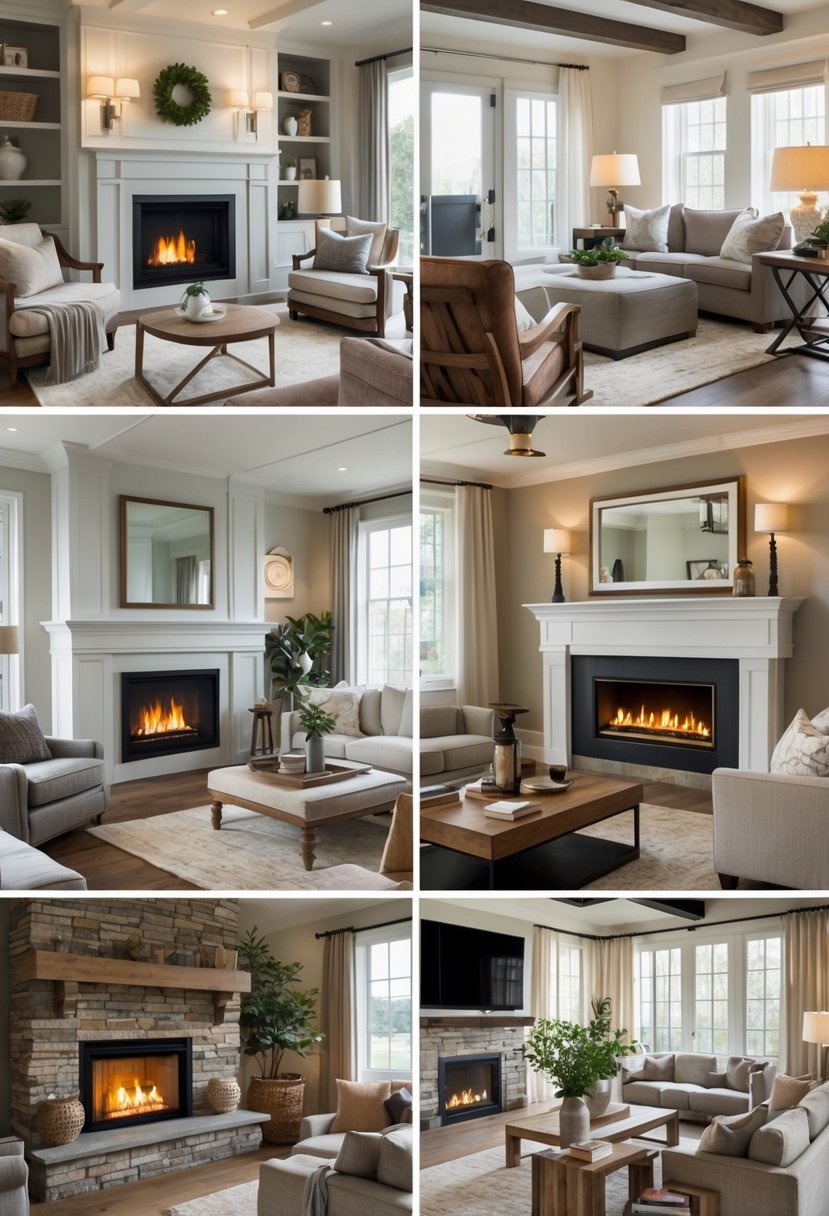
A living room with a fireplace needs a clear plan to highlight its strength while keeping the space balanced and functional. It is important to manage visual focus, match the fireplace style with the room’s decor, and arrange furniture effectively for comfort and flow.
Balancing Focal Points
The fireplace often acts as the room’s main focal point. To keep the design balanced, other elements like TV screens, artwork, or windows should not compete too much for attention. Positioning these secondary features wisely can create harmony.
For instance, placing a large mirror or art piece above or beside the fireplace can enhance its presence without overwhelming the space. Avoid clutter near the fireplace mantel so it remains a clean and inviting centerpiece.
Lighting also plays a role. Using soft, layered lighting around the fireplace supports a warm atmosphere and reinforces the focus on this area without harsh shadows or glare.
Integrating Fireplace Styles
The fireplace style should match the overall design theme of the living room. A modern fireplace requires sleek materials like metal or glass, while traditional or rustic fireplaces benefit from stone or brick surrounds.
To create visual cohesion:
- Choose mantel colors and materials that complement flooring and wall tones.
- Incorporate decor items near the fireplace that echo the style, such as vintage clocks for classic styles or minimalist sculptures for modern ones.
- Consider built-in shelving or cabinetry around the fireplace that fits the room’s character.
This approach ensures the fireplace feels like a natural part of the entire space rather than an afterthought.
Optimizing Furniture Arrangements
Furniture placement should encourage interaction with the fireplace while maintaining good traffic flow. Seating like sofas and chairs is best arranged facing or angled toward the fireplace to make it a social hub.
Tips include:
- Keep at least 3 feet of walking space around furniture for easy movement.
- Avoid blocking the fireplace view with large, bulky pieces.
- Add small side tables and lighting near seating to enhance usability.
Creating a seating arrangement that invites gatherings around the fireplace improves both the room’s comfort and function.
Enhancing Ambience and Functionality
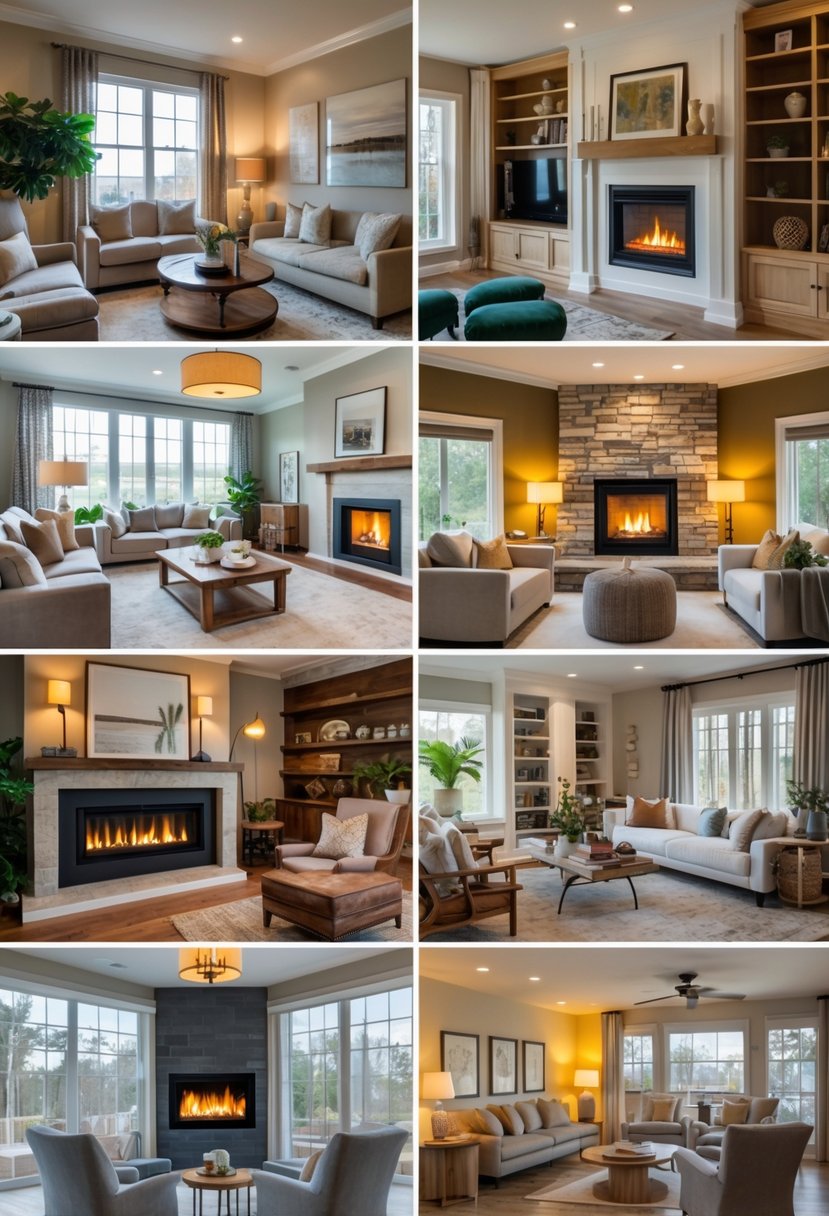
A well-designed living room with a fireplace balances mood and practicality. The right lighting can highlight the fireplace while setting a cozy tone. Materials and colors also shape how the space feels and works, making it inviting and easy to use daily.
Lighting Strategies
Lighting near a fireplace should create warmth and support different moods. Warm yellow tones mimic the natural glow of a fire, ideal for relaxing evenings. Using ambient LED lighting around the fireplace can add a gentle glow without harshness.
Layering light sources works best. Task lighting, like floor lamps, helps with reading or activities near the fireplace. Dimmer switches give control over brightness and atmosphere.
Smart lighting systems can adjust colors based on time or weather. For instance, soft blue tones can calm on rainy days, while warm tones make the space feel snug in winter. Position lights to reduce glare on TVs near fireplaces if present.
Material and Color Selection
Materials around the fireplace influence both style and durability. Brick, stone, or tile are common because they withstand heat and add texture. Wood accents provide warmth but need fire safety measures.
Colors should support comfort and openness. Soft neutrals like taupe or cream create a calm, expansive feel. Dark finishes on stoves or frames add sleek contrast without overwhelming the room.
Combining natural materials with neutral palettes forms a balanced look. The material choices should also match the room’s furniture and flooring for harmony. For example:
| Material | Effect | Care Tip |
|---|---|---|
| Brick or stone | Rustic, durable | Regular dusting |
| Wood accents | Warm, inviting | Keep away from direct flames |
| Neutral paint | Expansive, calm | Choose matte finishes to reduce glare |
These elements help create a living room that feels both elegant and practical.
Frequently Asked Questions
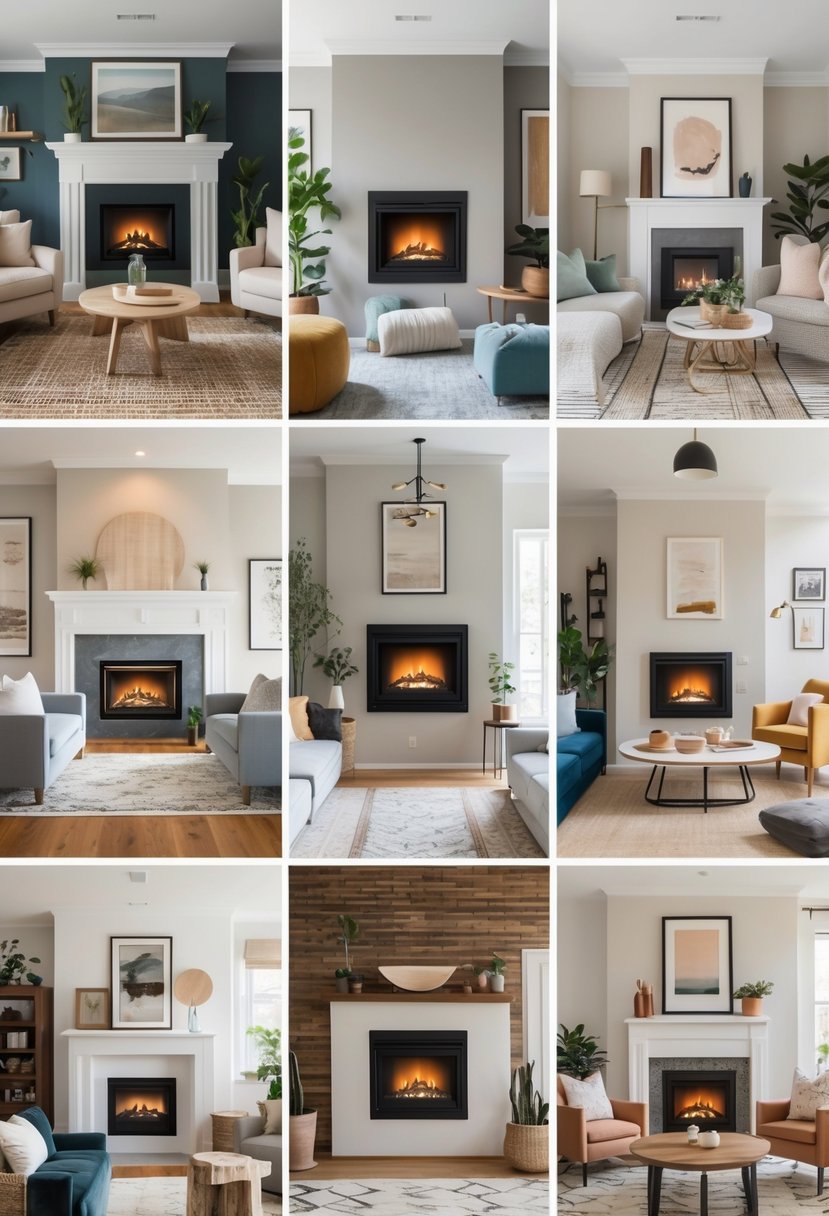
Many homeowners want to know how to update their fireplace with modern styles and where to place a TV without disrupting the room’s flow. These details help balance style and function in living rooms with fireplaces.
What are some modern fireplace design trends for living rooms?
Modern fireplaces often feature clean lines and minimalist looks. Popular designs include sleek glass surrounds and simple mantels that don’t overwhelm the room.
Materials like metal, concrete, and smooth stone are trending. They create a polished, contemporary feel.
Incorporating built-in seating or open shelving around the fireplace is another popular trend. It makes the fireplace a true focal point while adding storage or comfort.
Where is the optimal placement for a TV in a living room with a fireplace?
The best TV placement depends on the fireplace’s style and location. If the fireplace is centered on a wall, mounting the TV above it can work well with a slim, modern mantel.
When the fireplace and TV compete on the same wall, placing the TV on a nearby wall or arranging furniture to face both can help. This avoids awkward viewing angles.
Some choose to install the TV on a swivel mount near the fireplace. It allows switching focus between the TV and the fire without moving furniture.

